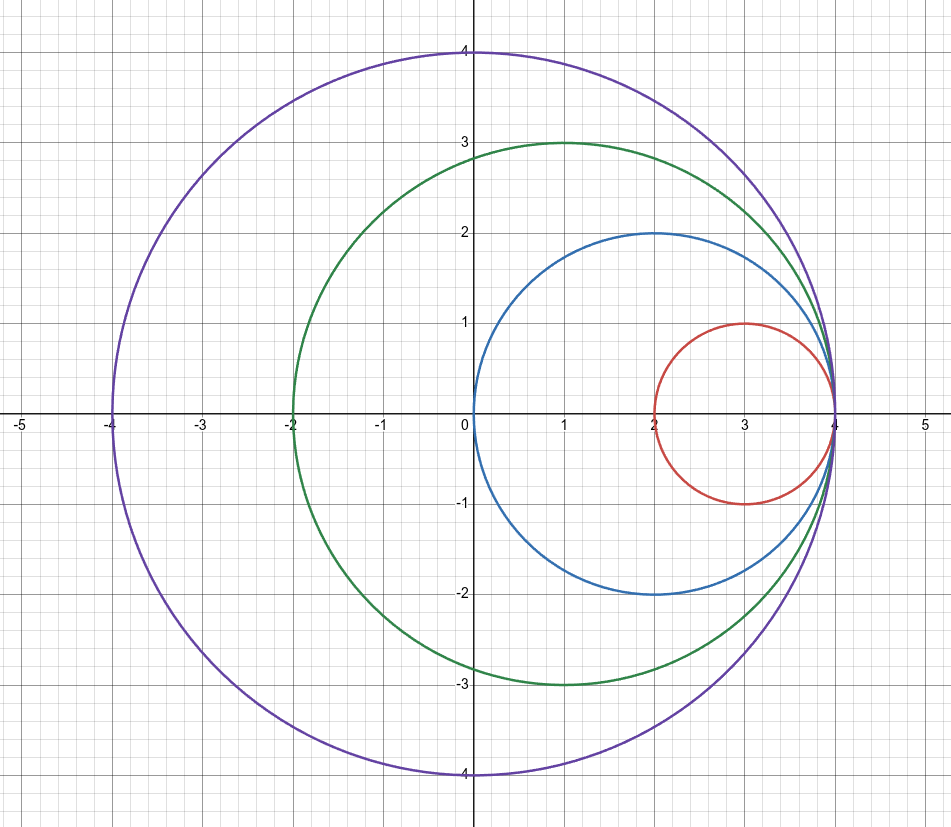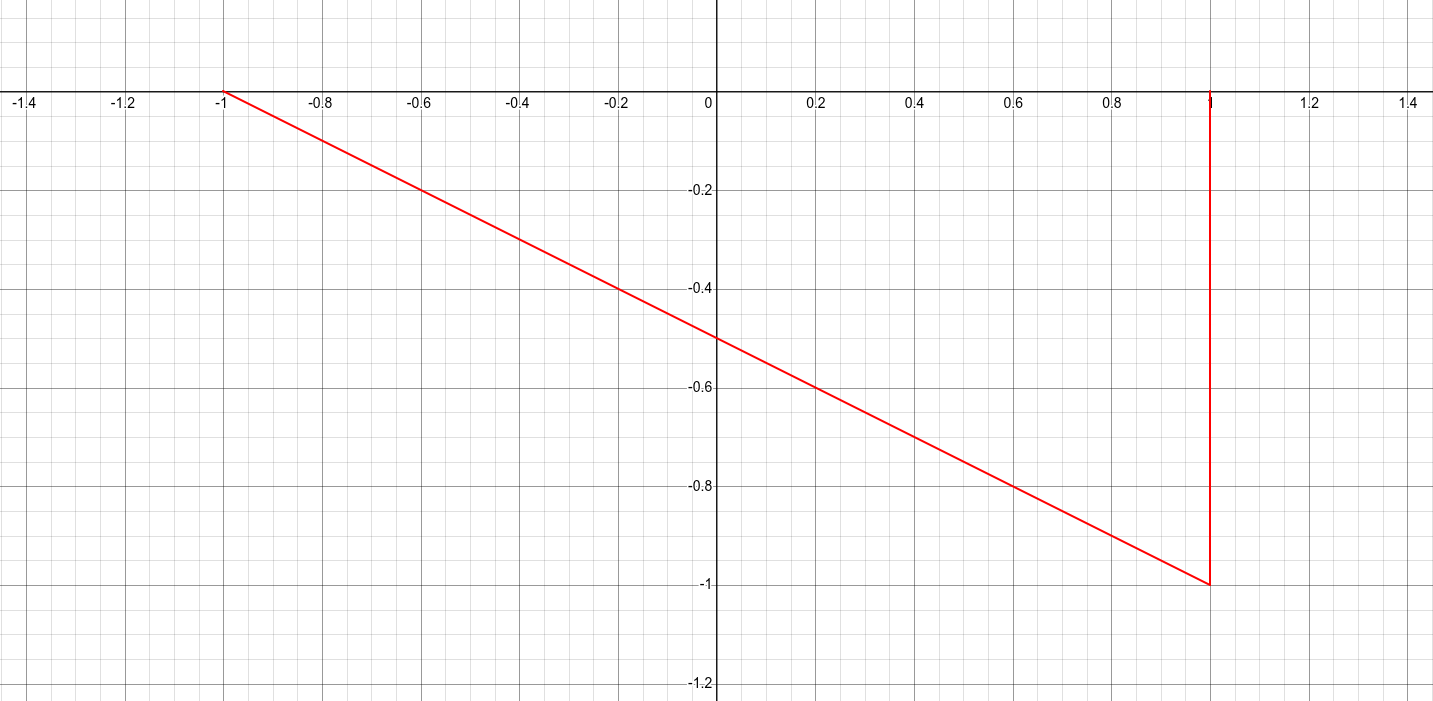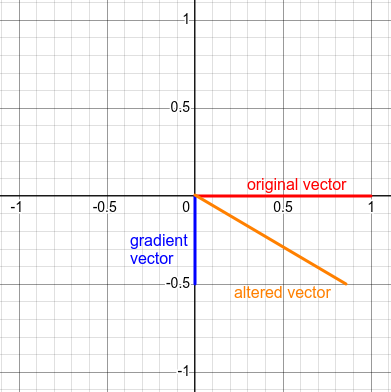Photons, being massless particles that by definition travel at the speed of light, behave differently from massive particles in the potential energy field. They have directional energy, similar to momenergy but without the benefit of resisting lateral motion.
Here we have a photon with 1 unit of energy moving to the right in the potential energy field. Note that all particles have a fixed radius of 1 in the potential energy field.
The energy level about the photon's sphere works similarly to that of a normal particle, (e (1 + cos Φ)) / 2, where e is the photon's energy and Φ is the off-axis angle. This energy distorts the potential energy field as normal, propagating as the simple inverse (1 / x) at the speed of light, which is the speed of the photon itself.

Since the photon is already moving at the speed at which change propagates through the field, it creates no gradient in front of itself. Since its energy drops to zero at the trailing edge, it has no gradient directly behind itself, either.
Because the directional energy of a photon is not true momenergy, it reacts to field gradients in a different manner from massive particles. Gradients directly along the axis of motion add to or subtract from the photon's internal energy. Orthogonal gradients alter the photon's trajectory according to the standard vector addition of sin θ, where θ is the gradient angle. However, the photon's tremendous speed means that the shallow gradients of most bodies have relatively little overall effect upon its trajectory.
A photon's lack of true momenergy means its trajectory is more easily altered than that of a massive particle. Since it has no mass, if its energy is ever reduced to zero, it ceases to exist. Photons never go backwards, but they can change direction. They can even enter elliptical orbits around very massive objects with enormous gradient curvature.


No comments:
Post a Comment
I reserve the right to remove egregiously profane or abusive comments, spam, and anything else that really annoys me. Feel free to agree or disagree, but let's keep this reasonably civil.